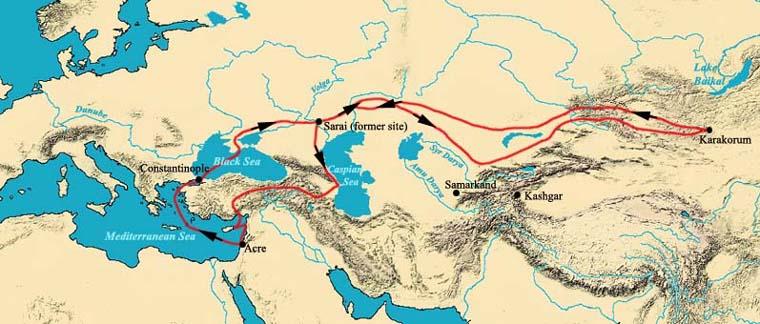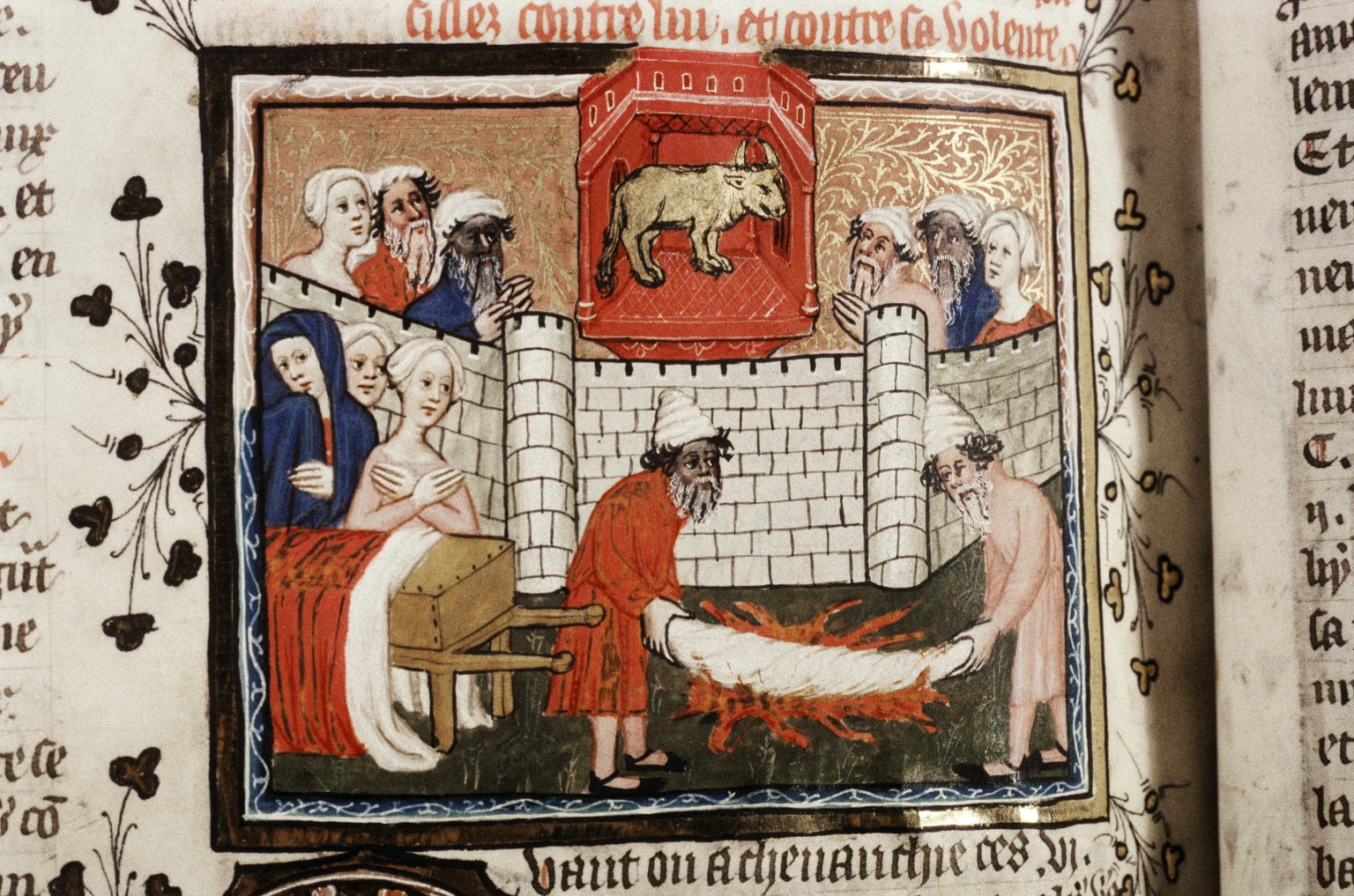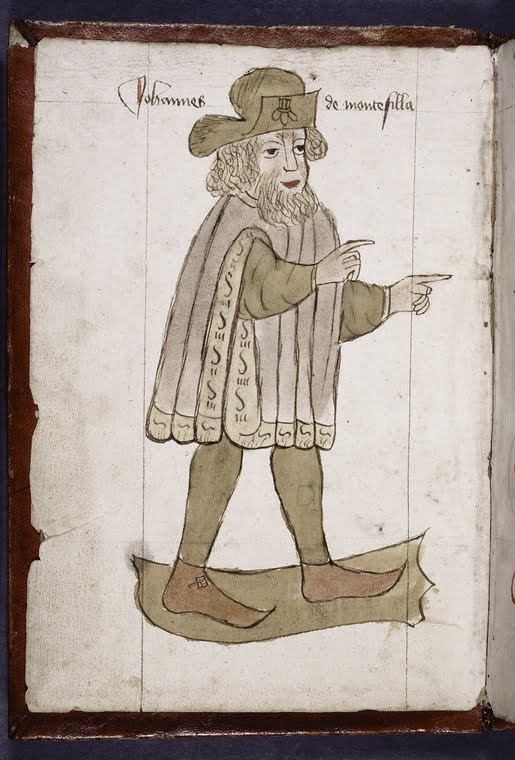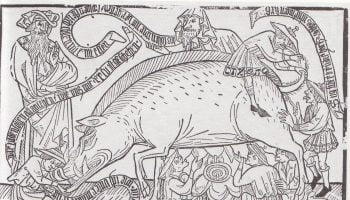Part XXXIII in our ongoing series on Race, Racism and the Middle Ages, by James Hill. You can find the rest of the special series here.
The medieval European understanding of “race” was quite complicated. It certainly was not the same as the modern one. As we have explored previously, “race” is a complicated social construct that invovles far more than the colour of a person’s skin. That being said, skin colour has been one of the central components of the modern idea of racial difference. As Director of the Center for Race and Gender at Berkeley Evelyn Nakano Gleen wrote in her book Shades of Difference, Why Skin Color Matters, despite race and colour (and thus racism and what she terms “colorism” being distinct and different,
at the symbolic level, the meanings of skin color and race are inextricably linked.
So, in order to understand how medieval people understood the concept of race, it can be quite useful to see how they described people of color, and whether this link between colour and race existed then.
We have also explored some of the facets of the European understanding of the wider world and its people in previous articles in this series: skin colour was sometimes thought of as a manifestation of the soul in some texts; some authors certainly thought of skin color as mutable and able to change based on circumstance. Much of this thinking about race stems from the romance literature and theology of Northern Europe. But that is not where this story ends: there is a branch of medieval writing which deserves a greater exploration—particularly when considering what Europeans in the Middle Ages understood about “race”: the travelogue.
One of the biggest misconceptions about medieval Europe is that it was a static place, that most people would never leave their hometown or village. The reality is, as per usual, more complicated.
If someone wasn’t a serf bound to the land, travel was quite common. Even if you were a serf, movement was not unheard of. And merchants, churchmen, craftsmen, nobles, and students were all particularly mobile, and have left us quite a lot of writings documenting their journeys. Some are more famous than others. Some left little to mark their passing other than Islamic coins in Anglo-Saxon England, or Old Norse runes carved into the Hagia Sophia. But others have become household names; people like Marco Polo have left a legacy that survives to this day. Those who ventured out of Europe and experienced the rest of the world can give us a certain insight into how they understood other people, and how they reported that back to Europe.
John of Plano Carpini and William Rubruck: Only Skin Deep

One of the pieces of “evidence” used to support the inaccurate assumption that Europe was racially homogenous in the Middle Ages is that skin colour doesn’t crop up often in European medieval texts.
The problem with this line of thinking is that Europeans who travelled outside of Europe—amongst people who looked quite different from them, also did not talk about skin colour much. Nor did they talk much about any of the other physical characteristics that modern people point to to describe racial difference: facial features or hair colour, texture, or style. During the renaissance, Europeans obsessed on these details when depicting the ‘scary’ or ‘strange’ world they explored, conquered, and enslaved. Yet for medieval European writers, this does not appear to have been the case.

Take, for example, John of Plano Carpini and William Rubruck. Both were friars, and both travelled—separately—over the north edge of the Black Sea, through Persia, and along the Asian interior. They even reached as far as Karakorum, in Mongolia, in the 1250s. Along the way both describe meeting many people, both those local to the regions they travelled through, and other travellers from all over Eurasia.
Both completely omit any mention of skin colour.
Benedict the Pole, who wrote a slightly more embroidered version of John of Plano Carpini’s journey, also failed to mention any variation in skin tones, even amongst the ambassadors of China and India (who John and William encountered several times). Both John and William also visited the courts of several lesser khans as well as the Great Khan in Karakorum. These courts were populated with men and women from all over the Asian continent. But never a mention of what we, today, would think of as physical signifiers of race.
This omission isn’t from a lack of physical descriptions of people, either. William in particular described people in great detail. He just didn’t mention any differences in skin or obvious features that would visually distinguish men from different parts of the world (the only exception being a single mention that the men of China had smaller eyes than he did). For example, he described Khan Batü, a fearsome Mongol warlord who conquered great swathes of the West Asian steppe, and devastated much of Eastern Europe, as ‘roughly the height of his lord John de Beaumont, and his face was covered in red spots at that time.’
Similarly, Möngke, the Great Khan—probably the most powerful man in the world at that time—was described as:
seated on a couch, and was dressed in a skin spotted and glossy, like a seal’s skin. He is a little man, of medium height, aged forty-five years, and a young wife sat beside him.
The steppe peoples of central Asia were also described, at several points, in great depth. He details the furs and clothes they wore, their riding habits, the layouts of their yurts, their hospitality customs, and their religious practices. Conspicuously absent is a physical description that sets them apart from anyone in Europe.
Marco Polo and Race

Marco Polo spent about 25 years living outside of Europe. According to his autobiography, he travelled all over Asia, especially in China and India. Polo describes several hundred different kingdoms, tribes, and regions.
He mentions the skin colour of the people living there exactly 10 times.
Almost all of these mentions were in his travels in or near India. In one example, after having described the city of Kayal, the royal family, the city’s cultural practices, and the religious habits of the people, Marco describes a judicial trial-by-combat. It could be group combat, but if
the combat was man to man they will both be naked, just as they are normally, and each will have a knife. They are very skilled at defending themselves with these knives, for they are adept at paying a blow with them as well as attacking their opponents. This, then, is the procedure. As you may have gathered, they are a dark-skinned people. So one of them will draw a white circle wherever he chooses on the other’s body, saying to him “Know that I will strike you in this circle and nowhere else; defend yourself as best you can.” And the other will do the same to him.

In this description, the mention about the colour of the combatant’s skin appears to exist solely to justify the colour of the circle drawn on them, rather than for any other purpose. In all, out of a 342-page translation, Marco off-handedly mentions the skin colour of people only ten times. That is a lot of people he did not do so for.
These mentions of skin colour don’t appear to be generalisations the reader is supposed to make about the other places nearby. All ten of these mentions are specific to that place and carry no suggestion that they apply to other places; the next place description sometimes also mentions skin colour, but often it does not.
Furthermore, they do not correlate skin colour to any moral or personal traits. One city in India where the population was described as ‘black’ is described as prosperous and civilised. Another tribe labelled ‘black’ was said to be wicked and deceitful. The only South-East Asian kingdom where the people were described as ‘brown’ were noted as ‘exceptionally beautiful and handsome’. The people of Japan are described as ‘white’, and ‘very polite’. But the vast majority of the time, there is simply no mention of skin colour.
John Mandeville’s Fantasies of Race

Perhaps the European writer most interested in skin colour was also the most fanciful (and least trustworthy) of these authors: John Mandeville. John Mandeville wrote his Travels in the 1350s, detailing wild adventures around the world. But it is generally accepted by scholars that John never went anywhere, and his account of the globe is based almost entirely on other sources. ‘John’ may not have even technically existed; we have no record of anyone of that name aside from his travelogue, and many scholars believe that “John Mandeville” was a pen name, or a fictional travelling character, like Lemuel Gulliver, Phileas Fogg, or Dora.
“John” (whoever he was) was more interested in the skin colour of people than other writers, but even he did not mention it very much. And importantly, he did not mention it consistently, or ascribe character traits to it.
When he did talk about skin, much like Marco Polo, it did not correspond to any particular physical or intellectual trait, and he does not see it as lesser, or an indication of evil. One problematic thing that can be said is that he seems to assume that dark skin was less attractive than white skin.
Marco also seems to bear this prejudice (though not consistently—many of the people for whom he omitted a description of their skin colour he describes as beautiful, even if they would have had dark skin, and even some of the dark-skinned people he describes were praised for their beauty). But he does make a few cringeworthy comments about beauty and dark skin. For example, Marco says the people of Kashmir were ‘dark and slender, and the women are very beautiful, as dark women go.’
Mandeville makes it worse. For example, he describes the women of Chaldia (in Arabia), as ‘swarthy and ugly.’ Mandeville makes a number of other plenty of disparaging remarks on the appearance of foreign people. But it’s comparatively rare that these are tied to what we would consider racial features. For example, he suggests that the testicles of the men of India dangled so low (due to the heat, of course) that they had to be bound with tape to ensure their survival. Sweaty balls may be a curse, but they don’t seem to be tied to race in this case.
Overall, John’s book hints that Europeans’—or at least his—impressions of other skin colours weren’t particularly positive. But it also seems clear that it wasn’t important enough to draw regular attention to. These examples are very much the exception, not the rule, and the vast majority of the time physical descriptions carry no racial markings at all, or just aren’t even there.
Race for the Medieval Traveller
So, in summary, the travellers out of Europe in the Middle Ages were—by comparison with modern people—surprisingly disinterested in the skin colour of most of the people they met. When they do refer to it, it is largely as a curiosity of appearance, rather than carrying any specific meanings, or placed within a racial framework similar to those present in today’s society. People described as ‘black’, ‘brown’, or ‘white’ seem to be described with about as many positive and as many negative traits as anyone else. ‘Black’ is not pejorative here; there was no link between skin colour and wickedness. Many of the ‘black’ people of Africa they were describing were Christian; the descriptions of their bodies are were not substantially different to any other ‘black’ people described in India or Africa.
The way their non-physical characteristics were described is very different indeed. But these had little to do with skin colour or other physical features, and much more to do with something medieval Europeans were obsessed with: their faith.
That’s a topic for another article. But it’s important to stress that medieval Europeans were quite able to demonstrate a wide range of prejudices. And it’s also important not to impose later-European ideas of race on the Middle Ages too much. For the authors here, who were some of the Europeans who had the most contact with other races, the physical markers of “race” were not very important. They barely get a mention. And when they do mention these physical features, it has no particular associations. And it particularly is not connected with worth in a moralizing way as it was centuries later, and, for many, remains so to this day.
Editor’s note: This article has been slightly revised from its original form. Originally it seemed to imply that skin colour was equated with race; that is neither true nor was it the intent of the author. The article has been revised to better reflect some of the complexities around this idea.
If you enjoyed that article, please share it with your history-loving friends on Facebook, or on Twitter! And click to subscribe here to receive every new article from The Public Medievalist the moment it launches.





Comments are closed.